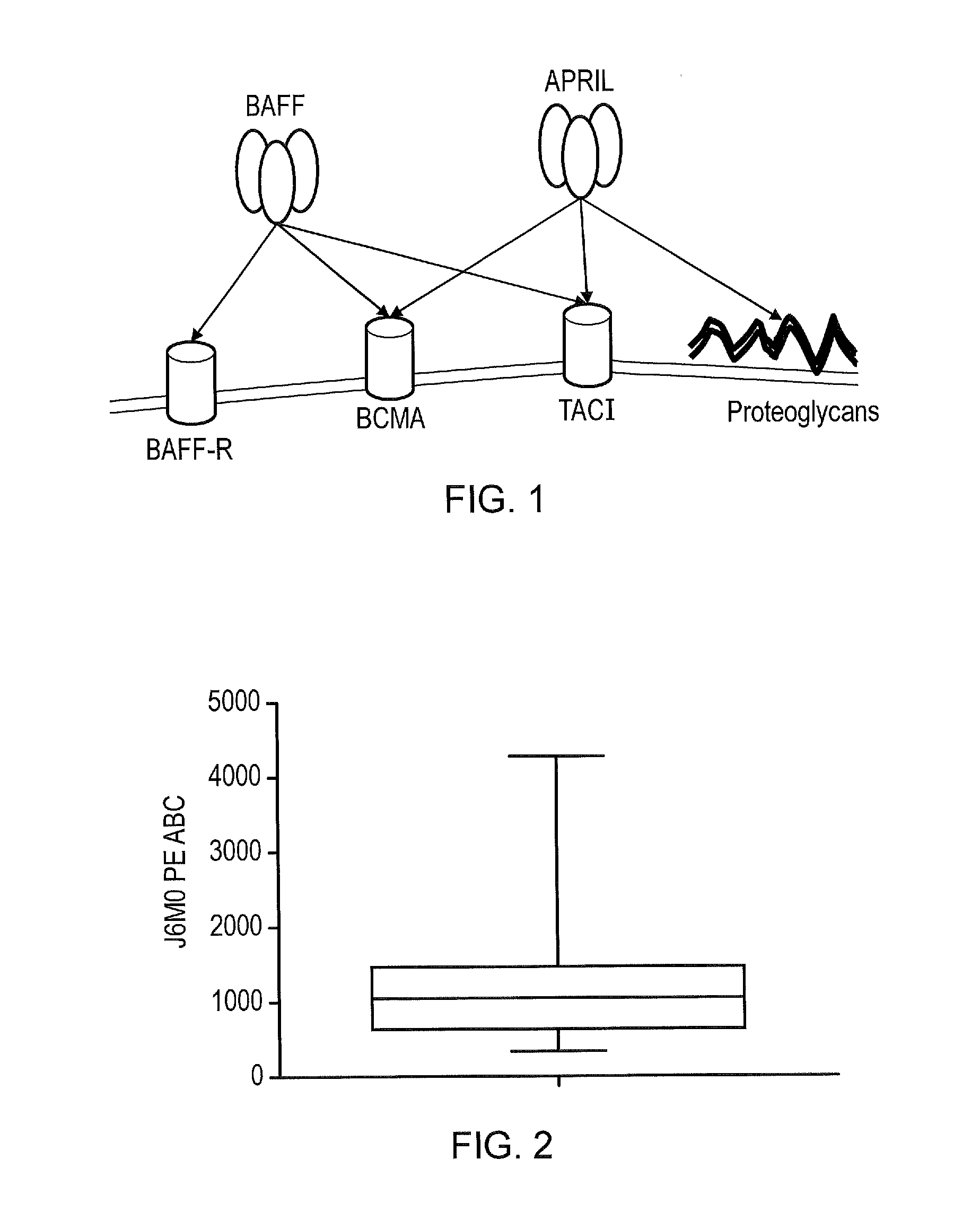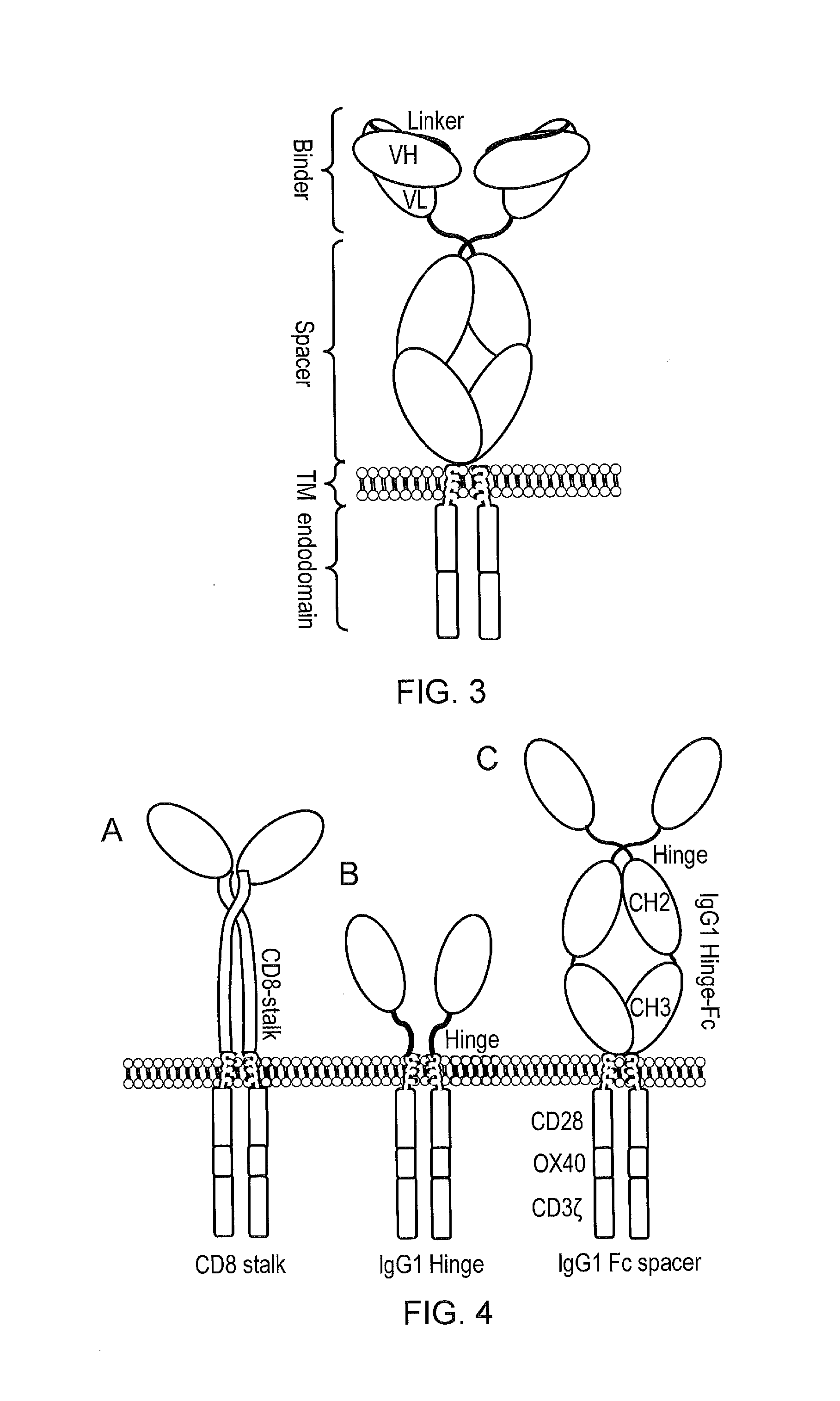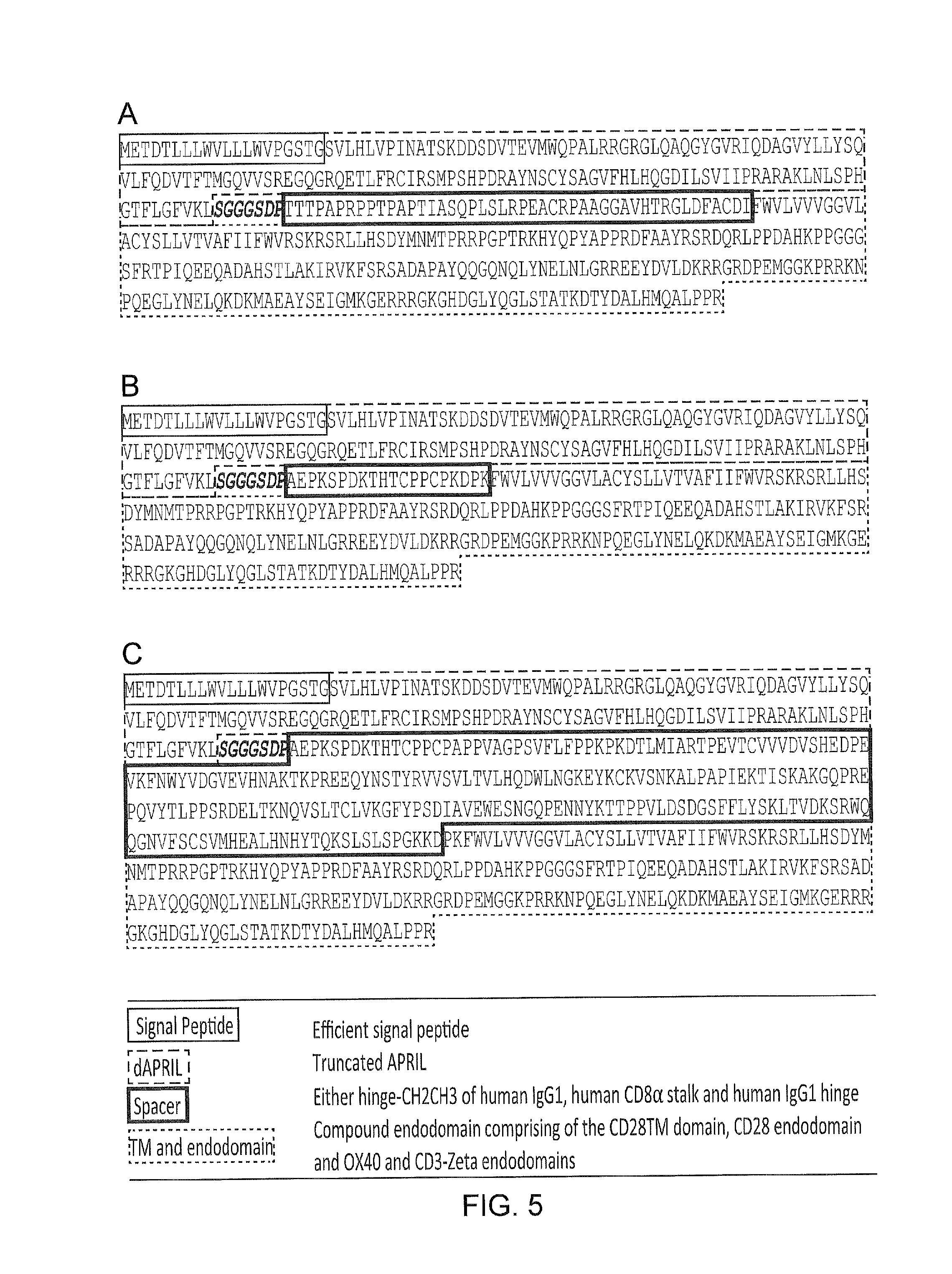Chimeric antigen receptor
a technology of chimeric antigen and receptor, which is applied in the direction of drug composition, extracellular fluid disorder, immunological disorders, etc., can solve the problems of burdensome suffering, abnormal plasma cell accumulation, and interference with the production of normal blood cells, and achieve the effect of efficient killing of bcma-expressing targets
- Summary
- Abstract
- Description
- Claims
- Application Information
AI Technical Summary
Benefits of technology
Problems solved by technology
Method used
Image
Examples
example 1
Characterisation of BCMA as a Target for Myeloma
[0116]Primary myeloma cells were isolated by performing a CD138 immunomagnetic selection on fresh bone marrow samples from Multiple myeloma patients that were known to have frank disease. These cells were stained with the BCMA specific J6MO mAb (GSK) which was conjugated to PE. At the same time, a standard of beads with known numbers of binding sites was generated using the PE Quantibrite bead kit (Becton Dickenson) as per the manufacturer's instructions. The BCMA copy number on myeloma cells could be derived by correlating the mean-fluorescent intensity from the myeloma cells with the standard curve derived from the beads. It was found that the range of BCMA copy number on a myeloma cell surface is low: at 348.7-4268.4 BCMA copies per cell with a mean of 1181 and a median of 1084.9 (FIG. 2). This is considerably lower than e.g. CD19 and GD2, classic targets for CARs. Presence of BCMA expression on primary myeloma cells was also confir...
example 2
Design and Construction of APRIL Based CARs
[0117]APRIL in its natural form is a secreted type II protein. The use of APRIL as a BCMA binding domain for a CAR requires conversion of this type II secreted protein to a type I membrane bound protein and for this protein to be stable and to retain binding to BCMA in this form. To generate candidate molecules, the extreme amino-terminus of APRIL was deleted to remove binding to proteoglycans. Next, a signal peptide was added to direct the nascent protein to the endoplasmic reticulum and hence the cell surface. Also, because the nature of spacer used can alter the function of a CAR, three different spacer domains were tested: an APRIL based CAR was generated comprising (i) a human IgG1 spacer altered to remove Fc binding motifs; (ii) a CD8 stalk; and (iii) the IgG1 hinge alone (cartoon in FIG. 4 and amino acid sequences in FIG. 5, and also amino acid sequences in FIG. 19 which differ from the sequences in FIG. 5 by having a different signa...
example 3
Expression and Function of APRIL Based CARs
[0118]The aim of this study was to test whether the APRIL based CARs which had been constructed were expressed on the cell surface and whether APRIL had folded to form the native protein. T-cells were transduced with these different CAR constructs and stained using a commercially available anti-APRIL mAb, along with staining for the marker gene and analysed by flow-cytometry. The results of this experiment are shown in FIG. 6B where APRIL binding is plotting against marker gene fluorescence. These data show that in this format, the APRIL based CARs are expressed on the cell surface and APRIL folds sufficiently to be recognized by an anti-APRIL mAb.
[0119]Next, it was determined whether APRIL in this format could recognize BCMA and TACI. Recombinant BCMA and TACI were generated as fusions with mouse IgG2a-Fc. These recombinant proteins were incubated with the transduced T-cells. After this, the cells were washed and stained with an anti-mouse...
PUM
| Property | Measurement | Unit |
|---|---|---|
| Fraction | aaaaa | aaaaa |
| Nucleic acid sequence | aaaaa | aaaaa |
| Disorder | aaaaa | aaaaa |
Abstract
Description
Claims
Application Information
 Login to View More
Login to View More - R&D
- Intellectual Property
- Life Sciences
- Materials
- Tech Scout
- Unparalleled Data Quality
- Higher Quality Content
- 60% Fewer Hallucinations
Browse by: Latest US Patents, China's latest patents, Technical Efficacy Thesaurus, Application Domain, Technology Topic, Popular Technical Reports.
© 2025 PatSnap. All rights reserved.Legal|Privacy policy|Modern Slavery Act Transparency Statement|Sitemap|About US| Contact US: help@patsnap.com



